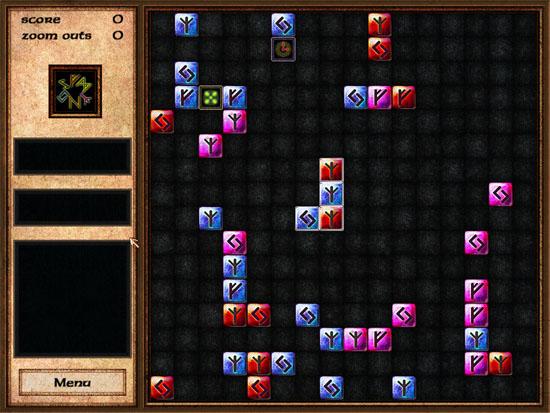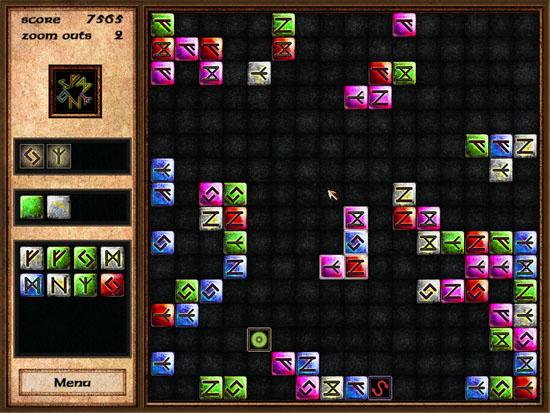- Wondering how to get Monopoly GO! free rolls? Well, you’ve come to the right place. In this guide, we provide you with a bunch of tips and tricks to get some free rolls for the hit new mobile game. We’ll …
Best Roblox Horror Games to Play Right Now – Updated Weekly
By Adele Wilson
Our Best Roblox Horror Games guide features the scariest and most creative experiences to play right now on the platform!The BEST Roblox Games of The Week – Games You Need To Play!
By Sho Roberts
Our feature shares our pick for the Best Roblox Games of the week! With our feature, we guarantee you'll find something new to play!Type Soul Clan Rarity Guide – All Legendary And Common Clans Listed!
By Nathan Ball
Wondering what your odds of rolling a particular Clan are? Wonder no more, with my handy Type Soul Clan Rarity guide.
Rune Twister Review
If you’re looking for an interesting twist on your regular match-3 experience, Bionic Nose is here to provide a literal one. Rune Twister allows the player to not only rotate the Tetris-style pieces, but also spin the entire board.

Rune Twister is an intriguing concept packaged with boring gameplay and dodgy aesthetics.
If you’re looking for an interesting twist on your regular match-3 experience, Bionic Nose is here to provide a literal one. Rune Twister allows the player to not only rotate the Tetris-style pieces, but also spin the entire board.
No doubt an interesting concept, but one that is built on skew-whiff foundations. Lack of content and explanation, coupled with dodgy controls and a dull atmosphere, mean it’s quite a missed opportunity.
Pieces spawn in the centre of the board, made up of different coloured blocks with runes scrawled onto them. Similar blocks sit around the edges of the screen, and your task is to link up three or more of the same coloured blocks, or blocks with identical runes.

Rune Twister‘s selling point is the ability to rotate both the active block and the whole level. The block will always fall downwards, so the idea is that if you want to match your current block up with those on the ceiling, you’ll need to spin the level 180 degrees. The way in which the screen rotates is very smooth and pleasing, and the ease of play initially pulls you into the action.
Interestingly, you can technically keep your block hovering for as long as you’d like. Rotate the board over and over, and the block will never fall to the ground. This gives you plenty of time to make a decision as to where you want to place your bricks.
Once you’ve got your head around the general idea, however, cracks start to appear. The mouse-only controls can be awkward – to drop a block you need to keep clicking directly underneath it, but clicking on it will cause it to rotate. Hence, a number of times I accidentally clicked on my current block as it was about to land, and it spun around, landing in a different position. It would have made far more sense to allow the player to simply click anywhere at the bottom to drop, rather than just under the block.

The rules of the game aren’t fully explained. There are special runes you can pick up and use, allowing you to remove certain pieces from the board. I had no idea what any of these runes did, and eventually ended up randomly clicking all of them. At one point I activated a run, and two seconds later was awarded a Game Over – I had no idea how it had happened! A short tutorial would have been much appreciated.
Finally, the game as a whole just isn’t very fun. The action is slow moving, and even on the hardest difficulty it’s still rather easy to win, due to the aforementioned block-hovering technique. There’s only one game mode available, so you’ll have seen everything Rune Twister has to offer in the space of an hour. It doesn’t help either than both the visuals and the music are dull as ditchwater.
Rune Twister should be commended for trying something that little bit different, and the concept works fine. All it needs now is for the rest of the game to back it up. If the idea still appeals to you, make sure you check out the demo.

The good

The bad
More articles...
Monopoly GO! Free Rolls – Links For Free Dice
By Glen Fox
Wondering how to get Monopoly GO! free rolls? Well, you’ve come to the right place. In this guide, we provide you with a bunch of tips and tricks to get some free rolls for the hit new mobile game. We’ll …Best Roblox Horror Games to Play Right Now – Updated Weekly
By Adele Wilson
Our Best Roblox Horror Games guide features the scariest and most creative experiences to play right now on the platform!The BEST Roblox Games of The Week – Games You Need To Play!
By Sho Roberts
Our feature shares our pick for the Best Roblox Games of the week! With our feature, we guarantee you'll find something new to play!Type Soul Clan Rarity Guide – All Legendary And Common Clans Listed!
By Nathan Ball
Wondering what your odds of rolling a particular Clan are? Wonder no more, with my handy Type Soul Clan Rarity guide.







